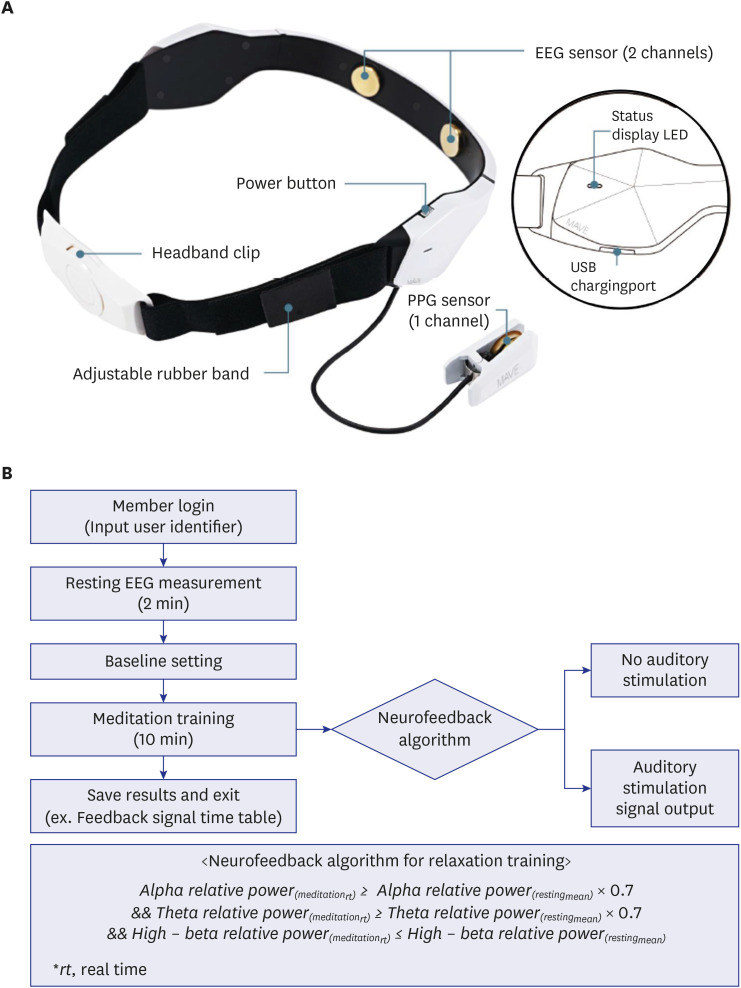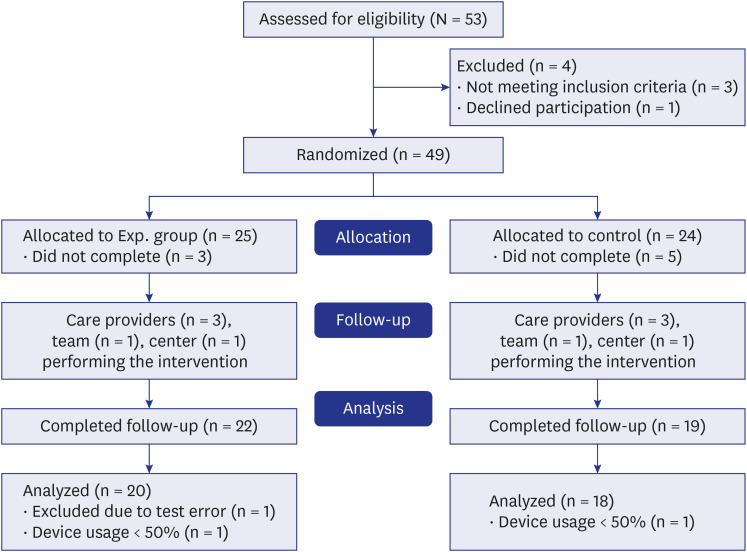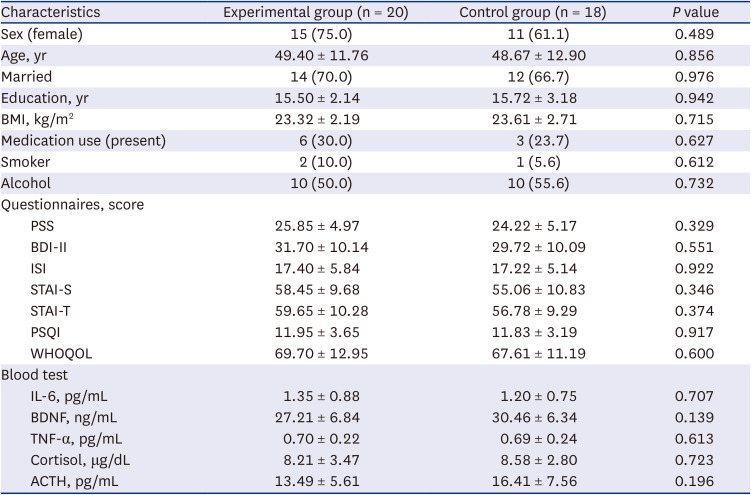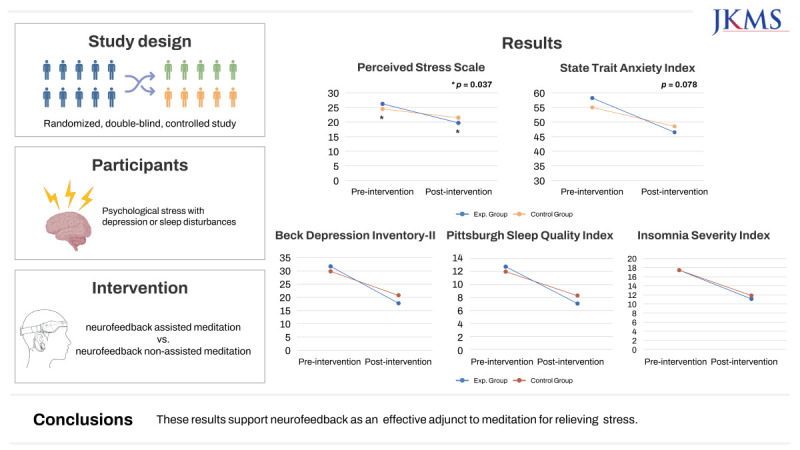1. Chrousos GP, Gold PW. The concepts of stress and stress system disorders. Overview of physical and behavioral homeostasis. JAMA. 1992; 267(9):1244–1252. PMID:
1538563.
2. Chrousos GP. Stress and disorders of the stress system. Nat Rev Endocrinol. 2009; 5(7):374–381. PMID:
19488073.
3. Burke HM, Davis MC, Otte C, Mohr DC. Depression and cortisol responses to psychological stress: a meta-analysis. Psychoneuroendocrinology. 2005; 30(9):846–856. PMID:
15961250.
4. Padgett DA, Glaser R. How stress influences the immune response. Trends Immunol. 2003; 24(8):444–448. PMID:
12909458.
5. Esler M, Kaye D. Sympathetic nervous system activation in essential hypertension, cardiac failure and psychosomatic heart disease. J Cardiovasc Pharmacol. 2000; 35(7):Suppl 4. S1–7.
6. Lloyd C, Smith J, Weinger K. Stress and diabetes: a review of the links. Diabetes Spectr. 2005; 18(2):121–127.
7. Kabat-Zinn J, Massion AO, Kristeller J, Peterson LG, Fletcher KE, Pbert L, et al. Effectiveness of a meditation-based stress reduction program in the treatment of anxiety disorders. Am J Psychiatry. 1992; 149(7):936–943. PMID:
1609875.
8. Davidson RJ, Kabat-Zinn J, Schumacher J, Rosenkranz M, Muller D, Santorelli SF, et al. Alterations in brain and immune function produced by mindfulness meditation. Psychosom Med. 2003; 65(4):564–570. PMID:
12883106.
9. Jo JM. EEG brainwave analysis for research on meditation influence to the concentration. J Korea Inst Electron Commun Sci. 2014; 9(12):1421–1426.
10. Ahn SK. The Effect of Neurofeedback Training on Attention and School Achievement Motivation of primary. J Korea Acad Ind Coop Soc. 2011; 12(12):5525–5530.
11. Lardone A, Liparoti M, Sorrentino P, Rucco R, Jacini F, Polverino A, et al. Mindfulness meditation is related to long-lasting changes in hippocampal functional topology during resting state: a magnetoencephalography study. Neural Plast. 2018; 2018:5340717. PMID:
30662457.
12. Balconi M, Fronda G, Crivelli D. Effects of technology-mediated mindfulness practice on stress: psychophysiological and self-report measures. Stress. 2019; 22(2):200–209. PMID:
30472901.
13. Crivelli D, Fronda G, Venturella I, Balconi M. Stress and neurocognitive efficiency in managerial contexts: a study on technology-mediated mindfulness practice. Int J Workplace Health Manag. 2019; 12(2):42–56.
14. Brandmeyer T, Delorme A. Meditation and neurofeedback. Front Psychol. 2013; 4:688. PMID:
24109463.
15. Teplan M. Fundamentals of EEG measurement. Meas Sci Rev. 2002; 2(2):1–11.
16. Sherlin LH, Arns M, Lubar J, Heinrich H, Kerson C, Strehl U, et al. Neurofeedback and basic learning theory: implications for research and practice. J Neurother. 2011; 15(4):292–304.
17. Nieto-Vallejo AE, Ramírez-Pérez OF, Ballesteros-Arroyave LE, Aragón A. Design of a neurofeedback training system for meditation based on EEG technology. Rev Fac Ing. 2021; 30(55):e12489.
18. Alonso JF, Romero S, Ballester MR, Antonijoan RM, Mañanas MA. Stress assessment based on EEG univariate features and functional connectivity measures. Physiol Meas. 2015; 36(7):1351–1365. PMID:
26015439.
19. Attar ET. Review of electroencephalography signals approaches for mental stress assessment. Neurosciences. 2022; 27(4):209–215. PMID:
36252972.
20. Chen C, Xiao X, Belkacem AN, Lu L, Wang X, Yi W, et al. Efficacy evaluation of neurofeedback-based anxiety relief. Front Neurosci. 2021; 15:758068. PMID:
34776855.
21. Cheon EJ, Koo BH, Choi JH. The efficacy of neurofeedback in patients with major depressive disorder: an open labeled prospective study. Appl Psychophysiol Biofeedback. 2016; 41(1):103–110. PMID:
26392114.
22. Lomas T, Ivtzan I, Fu CH. A systematic review of the neurophysiology of mindfulness on EEG oscillations. Neurosci Biobehav Rev. 2015; 57:401–410. PMID:
26441373.
23. Navarro Gil M, Escolano Marco C, Montero-Marín J, Minguez Zafra J, Shonin E, García Campayo J. Efficacy of neurofeedback on the increase of mindfulness-related capacities in healthy individuals: a controlled trial. Mindfulness. 2018; 9(1):303–311.
24. Sas C, Chopra R. MeditAid: a wearable adaptive neurofeedback-based system for training mindfulness state. Pers Ubiquitous Comput. 2015; 19(7):1169–1182.
25. Hafeez Y, Ali SS, Mumtaz W, Moinuddin M, Adil SH, Al-Saggaf UM, et al. Investigating neurofeedback protocols for stress mitigation: a comparative analysis of different stimulus contents. IEEE Access. 2019; 7:141021–141035.
26. Treleaven DA. Trauma-Sensitive Mindfulness: Practices for Safe and Transformative Healing. New York, NY, USA: WW Norton & Company;2018.
27. Kim J. Quality grading measure for online digital contents vitalization. J Digit Contents Soc. 2014; 15(2):309–317.
28. Yoo K. The development of internet contents evaluation criteria for early childhood education. J Early Child Educ. 2006; 26(5):287–306.
29. Cahn BR, Polich J. Meditation states and traits: EEG, ERP, and neuroimaging studies. Psychol Bull. 2006; 132(2):180–211. PMID:
16536641.
30. Lee DJ, Kulubya E, Goldin P, Goodarzi A, Girgis F. Review of the neural oscillations underlying meditation. Front Neurosci. 2018; 12:178. PMID:
29662434.
31. Lee EH. Review of the psychometric evidence of the perceived stress scale. Asian Nurs Res. 2012; 6(4):121–127.
32. Lee J, Shin C, Ko YH, Lim J, Joe SH, Kim S, et al. The reliability and validity studies of the Korean version of the Perceived Stress Scale. Korean J Psychosom Med. 2012; 20(2):127–134.
33. Sohn SI, Kim DH, Lee MY, Cho YW. The reliability and validity of the Korean version of the Pittsburgh Sleep Quality Index. Sleep Breath. 2012; 16(3):803–812. PMID:
21901299.
34. Cho YW, Song ML, Morin CM. Validation of a Korean version of the Insomnia Severity Index. J Clin Neurol. 2014; 10(3):210–215. PMID:
25045373.
35. The WHOQOL Group. Development of the World Health Organization WHOQOL-BREF quality of life assessment. Psychol Med. 1998; 28(3):551–558. PMID:
9626712.
36. Akerstedt T, Levi L. Circadian rhythms in the secretion of cortisol, adrenaline and noradrenaline. Eur J Clin Invest. 1978; 8(2):57–58. PMID:
417934.
37. Wüst S, Wolf J, Hellhammer DH, Federenko I, Schommer N, Kirschbaum C. The cortisol awakening response - normal values and confounds. Noise Health. 2000; 2(7):79–88.
38. Chida Y, Steptoe A. Cortisol awakening response and psychosocial factors: a systematic review and meta-analysis. Biol Psychol. 2009; 80(3):265–278. PMID:
19022335.
39. Yu X, Cohen ZP, Tsuchiyagaito A, Cochran G, Aupperle RL, Stewart JL, et al. Neurofeedback-augmented mindfulness training elicits distinct responses in the subregions of the insular cortex in healthy adolescents. Brain Sci. 2022; 12(3):363. PMID:
35326319.
40. Koncz A, Demetrovics Z, Takacs ZK. Meditation interventions efficiently reduce cortisol levels of at-risk samples: a meta-analysis. Health Psychol Rev. 2021; 15(1):56–84. PMID:
32635830.
41. Bhayee S, Tomaszewski P, Lee DH, Moffat G, Pino L, Moreno S, et al. Attentional and affective consequences of technology supported mindfulness training: a randomised, active control, efficacy trial. BMC Psychol. 2016; 4(1):60. PMID:
27894358.
42. Polich G, Gray S, Tran D, Morales-Quezada L, Glenn M. Comparing focused attention meditation to meditation with mobile neurofeedback for persistent symptoms after mild-moderate traumatic brain injury: a pilot study. Brain Inj. 2020; 34(10):1408–1415. PMID:
32783645.
43. Crivelli D, Fronda G, Balconi M. Neurocognitive enhancement effects of combined mindfulness–neurofeedback training in sport. Neuroscience. 2019; 412:83–93. PMID:
31195055.
44. Anand BK, Chhina GS, Singh B. Some aspects of electroencephalographic studies in Yogis. Electroencephalogr Clin Neurophysiol. 1961; 13(3):452–456.
45. Tarrant JM. Neuromeditation: an introduction and overview. Handbook of Clinical QEEG and Neurotherapy. 1st ed. New York, NY, USA: Routledge;2016. p. 96–113.
46. Travis F, Shear J. Focused attention, open monitoring and automatic self-transcending: categories to organize meditations from Vedic, Buddhist and Chinese traditions. Conscious Cogn. 2010; 19(4):1110–1118. PMID:
20167507.
47. Andrews-Hanna JR. The brain’s default network and its adaptive role in internal mentation. Neuroscientist. 2012; 18(3):251–270. PMID:
21677128.
48. van Lutterveld R, Houlihan SD, Pal P, Sacchet MD, McFarlane-Blake C, Patel PR, et al. Source-space EEG neurofeedback links subjective experience with brain activity during effortless awareness meditation. Neuroimage. 2017; 151:117–127. PMID:
26921712.









 PDF
PDF Citation
Citation Print
Print




 XML Download
XML Download